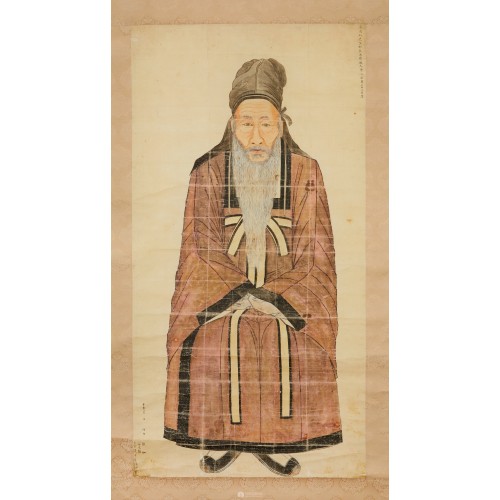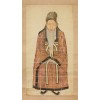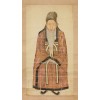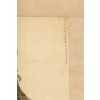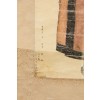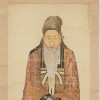본문
박장호 (朴長浩, 1859~1921) 호 : 화남(華南) , 이명 : 화강(華康)
황해도 장연(長淵) 사람이다. 1905년 을사늑약으로 국권이 침탈되자 1906년 홍천(洪川)에서 거의하여 관동(關東)의병의 영도자로서 활약, 1907년에는 이강년(雲崗 李康秊)과 연합하여 계속 항쟁하였다. 1910년 강점되자 국내 항쟁이 불가능해져 계속 투쟁을 위해 만주로 망명하였다. 1919년 3.1독립운동이 일어나자 4월 15일 각지의 의병영수·유림수뇌·보약사(保約社) 대표·농무계(農務契) 대표 등 500여명이 유하현 삼원보 서구대화사(柳河縣 三源堡 西溝大花斜)에 집회하여 종래의 개별적인 행동을 지양한 단일체로서 통합·체계화한 항전을 전개하고자 대한독립단(大韓獨立團)을 조직하고 독립선언문을 발표하였다. 이때 그는 대한독립단의 최고책임자인 도총재(都總栽)에 추대되어 결사복국(決死復國)을 위해 헌신하였다. 각 현(縣)에 지단(支團)·분단(分團)을 설치하여 보민회(保民會)·강립단(强立團) 등 친일단체의 숙청에 노력하였다. 하지만 대한독립단은 연호문제로 기원(紀元)독립단과 민국(民國)독립단으로 분열되었는데 그는 기원독립단 즉 구왕조(舊王朝)에 충성하는 복벽운영(復辟運動)에 주력하는 수구파(守舊派)에 속하였다. 그러나 후에는 임시정부와 공동보조를 취하게 되어 1921년 5월에는 군사활동을 단일화시키기 위한 광복군총영(光復軍總營)이 설립되니 이에 합류하였다. 독립운동을 총지휘하던 중 일제가 파견한 밀정에 의해 이역땅에서 암살당했다. 정부는 공훈을 기려 1962년에 건국훈장 국민장을 추서하였다.
朴长浩(1859-1921年),号华南,别名华康,黄海道长渊人。 1905年乙巳条约导致国权被侵犯后,1906年在洪川发起义举,作为关东义兵的领导者活跃,1907年与云岗李康秊联合继续抗争。1910年日本强占朝鲜后,国内抗争变得不可能,因此为了继续斗争逃亡到满洲。 1919年3.1独立运动爆发后,4月15日约500人包括义兵领袖、儒林领头人、保约社代表、农务契代表等在柳河县三源堡西沟大花斜集会,放弃以往个别行动,以单一体整合、系统化抗战,组织了大韩独立团并发表独立宣言。当时他被推举为大韩独立团的最高负责人都总裁,为决死复国献身。在各县设立支团、分团,努力清除亲日团体如保民会、强立团等。 然而,大韩独立团因年号问题分裂为纪元独立团和民国独立团,他属于即忠于旧王朝的复辟运动的守旧派即纪元独立团。后来与临时政府采取共同步调,1921年5月为了统一军事行动而成立的光复军总营加入其中。在指挥独立运动期间,被日本派遣的密探在异国他乡暗杀。政府为了纪念他的功绩,1962年追赠建国勋章-国民章。
Park Jang-ho (朴長浩, 1859~1921) Courtesy Name: Hwanam (華南), Alias: Hwagang (華康) He was a native of Jangwon (長淵), Hwanghae Province. In 1906, following the annexation of national sovereignty by the "Japan–Korea Treaty of 1905", he actively participated as a leader of the Dongnip forces in Hongcheon (洪川), and in 1907, he continued to resist Japan in alliance with 'Lee Gang-nyeon (李康秊).' Upon the annexation in 1910, rendering domestic independence movements impractical, he sought refuge in Manchuria to continue the struggle. When the March 1st Movement erupted in 1919, on April 15th, around 500 representatives including leaders of local Dongnip forces, influential figures of the Yulin Society, representatives of village protection associations, and representatives of agricultural committees convened at the Samwonbo West Ditch Grand Pavilion (柳河縣 三源堡 西溝大花斜). They aimed to unify and systemize the resistance movement and thus organized the Korean Independence Army (大韓獨立團), proclaiming the Declaration of Independence. He was appointed as the Chief Executive Officer of the Korean Independence Army and devoted himself to the cause of "re-establishing the country at the risk of one's life". He established branch units (支團) and divisional units (分團) in each county to suppress pro-Japanese organizations such as the 'Bominhoe (保民會)' and 'Gangripdan (强立團).' However, the Korean Independence Army split into factions over the era issue, leading to the formation of the Gwonseok faction (守舊派) supporting the restoration of the former dynasty (舊王朝), and the Minjok faction (民國) advocating for a new republic. Initially, he belonged to the Gwonseok faction. Later, he cooperated with the Provisional Government and joined the establishment of the Gwangbok Army Headquarters (光復軍總營) in May 1921 to unify military activities. While commanding the independence movement, he was assassinated by a Japanese spy dispatched to Manchuria. In recognition of his patriotic deeds, the government posthumously awarded him the Order of National Foundation and National Medal in 1962.
